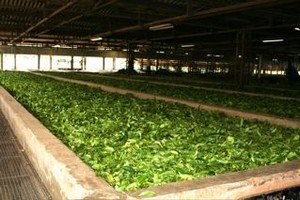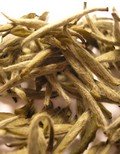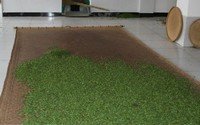Solving problems every tea drinker faces.
Exclusive subscriber benefits:
Receive four FREE quality ebooks worth $60
-
Save at least $5 during your first purchase

Imagine: pick the fresh leaves, spread them out to wither until moisture reduces to 20%, then dry further. This is white tea processing in a nutshell. Minimal heating. No rolling.
It is a stark contrast to green and oolong tea. It does not undergo fixation, where high heat is applied to kill the enzymes and stop the oxidation.
It does not undergo rolling, where the fixated leaves are massaged into various shapes.
The making of white tea starts with the cultivation of a suitable crop.
White Tea Processing #1:
Tea
Plants
It is widely quoted that all teas are Camellia sinensis; what makes the type of tea different is the processing.
In practice, farmers choose the plant varieties best suited for the teas they are making.
Longjing tea is flat and spear-shaped; it favours leaves that are thin and soft. Biluochun tea is rolled into tight and curly spirals; it favours tiny leaves.
In contrast, white tea favours fat buds with lots of silvery hairs and thick leaves.
There are not many tea plants that meet this criterion. Commonly used white tea plants include:
White Tea Processing #2:
Leaf
Selection
 Different types of
white tea are made from different leaves. The more buds it has, the younger the tea shoots, the higher the quality.
Different types of
white tea are made from different leaves. The more buds it has, the younger the tea shoots, the higher the quality.
Now, in descending order of quality:
Silver Needle (Baihao Yinzhen) is made from single bud extracted from one-bud-and-one-slightly-unfurled-leaf.
White Peony (Baimudan) is made from one bud with two slightly unfurled leaves of equal length. It can also be made from one bud with one leaf.
Other white teas such as Tribute Eyebrow (Gongmei), Longevity Eyebrow (Shoumei) and the so called new or green white tea use older leaves consisting of one bud with up to 3 leaves.
White Tea Processing #3:
Harvesting
White tea can be harvested in spring, summer and autumn.
Spring tea is the highest quality and most abundant. It makes up half of annual production. It is picked several times, with the first two rounds yielding the sweetest, fattest shoots.
Autumn tea is next best, and summer the worst. Each makes up about a quarter of annual production.
Some people complain that their white tea tastes bland. When buying, it is important to know when the tea is picked.
White Tea Processing #4:
Withering
While leaf selection has the biggest bearing on its eventual quality, it is during the withering stage that the tea-maker's skill is put to the most stringent test.
 During withering,
fresh leaves are left to dry in dormant condition for up to 3 days. This is "heavy" withering. In contrast, green tea is only withered for a few
hours.
During withering,
fresh leaves are left to dry in dormant condition for up to 3 days. This is "heavy" withering. In contrast, green tea is only withered for a few
hours.
The key is to facilitate the desired changes in tea chemistry while minimizing the amount of oxidation.
Ever wonder why white tea tastes so sweet? During withering, tea enzymes induce the production of sugars and theanine – but only at the right conditions.
It is a tricky affair. The factory needs to carefully monitor temperature, humidity, air-flow and light to facilitate this process.
Withering can be natural or artificial. Natural withered tea tastes better, but takes longer to produce, and so is less commonly used today. It can take place indoor or under the sun.
White Tea Processing #5:
Drying
Oven-bake the withered tea several times to reduce moisture to less than 5%. It is a quicker process than withering and takes less than an hour to complete.
As mentioned before, China's Fujian White Tea either comes from Fuding or Zhenghe county. These are the two main production regions.
Zhenghe processing differs from Fuding in one respect.
When weather permits, Zhenghe Silver Needle uses natural sun for final drying. This gives it a more toasted flavor compared to its Fuding cousin, which uses oven-drying.
New! Comments: Like This Story? Leave A Comment!
References
Yuan Di Shun (2006). Zhongguo Baicha. Xiamen Daxue Chubanshe.
Related Articles
Green Tea Harvesting - The Art of Picking Gourmet Green Tea
The rigorous green tea harvesting process makes Chinese gourmet green tea the finest in the world.
Chinese Green Tea Processing - Steaming, Roasting, Baking
Chinese green tea processing uses 3 firing methods. We explore the advantages and disadvantages of each.
Oolong Tea Processing - A Beginner's Guide
Oolong tea processing has long been the a dark art of the Chinese tea masters.
Back to Top of White Tea Processing
Back to Chinese White Tea Main Page
Back to Amazing Green Tea Home
Solving problems every tea drinker faces.
Exclusive subscriber benefits:
Receive four FREE quality ebooks worth $60
Save at least $5 during your first purchase
Copyright� 2006-2025 Amazing-Green-Tea.com. All rights reserved.

